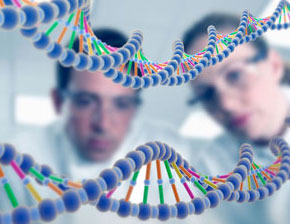Our brain and spinal column are the control center of our body. If these become damaged or altered, it can affect us in a variety of ways. With modern technology, our understanding of these effects is never-ending...
Hereditary Neurological Diseases
Hereditary neurological diseases are those diseases of the nervous system (brain, spinal cord and nerves) that are passed on from either parent to the offspring. This way, they run through families and if either parent or any ancestor has had any of these diseases then there is likelihood that the offspring may also be affected by it. The chances of the offspring having it will vary with the kind of disease. Following are the most common hereditary neurological diseases:
Craniosynostosis:
- In normal cases, the skull of the human body consists of a number of bone plates which are separated by sutures and as a child grows and his brain develops, these sutures get closer to finally form a singular bone which is known as the skull.
- Craniosynostosis is an example of hereditary neurological diseases in which the sutures start closing during childhood and this early closing up causes issues in the normal growth of the brain.
- Also it leads to abnormal inter-cranial pressure. There can also be a change in the symmetry of the skull and even the bones of the face.
- This neurological condition is actually the feature that is common to several syndromes and the chances of the disease hitting the offspring and the inheritance pattern itself varies according to the specific syndrome.
- This is why it is essential that all the family members including the children need to be examined to see if they carry the defected genes and look for signs like ear problems, cardiovascular malformations or defects in limbs.
- Following are the symptoms that are attached with craniosynostosis:
- Vomiting
- High fever
- Irritability
- Fatigue
- Swelling or redness in the incision areas
- Headache
- Reduced alertness
- If any of the above symptoms occur, the child should immediately be provided with medical care. Early detection can help in treating it and genetic counseling will help any parents if they want to know what the chances of them passing on the disease to their offspring are.
Microcephaly:
- This is one of the hereditary neurological diseases whose real cause for occurrence is not known yet.
- It is present right at birth and can be seen as a smaller than normal head in an infant at the time of birth.
- The children who suffer from this condition have a smaller brain and they suffer from mental retardation though there are some cases in which the intelligence remains of the same level as in a normal person despite the small head and brain.
- The symptoms of this disease include:
- The most obvious symptom is the small size of the head
- Seizures
- Mental retardation
- Poor feeding
- High-pitched cry
- Spasticity
- Delays in development
- There is no cure that can give a patient suffering from this disease a normal sized head. However, intervention here is all about reducing as many deformities and increasing as many capabilities as possible.
Huntington’s disease:
- Also known as Huntington’s chorea, this is the most common of all the hereditary neurological diseases. It occurs due to a defect in chromosome #4.
- The chances of passing on of the condition from either parent are 50% if either of them has the condition. The common symptoms of Huntington’s disease are:
- Moodiness
- Paranoia
- Hallucinations
- Fidgeting
- Clumsiness
- Psychosis
- Irritability
- There is no cure known for this disease and the person affected by it starts showing symptoms at the age of around 30 years and gets worse over time till he dies around the age of 50 years.

Resources
- Home
- Acupuncture Therapy For Neurological Diseases
- Chronic Neurological Diseases
- Common Neurological Diseases
- Degenerative Neurological Diseases
- Equine Neurological Diseases
- Fatal Neurological Diseases
- Genetic Neurological Diseases
- Hereditary Neurological Diseases
- List Of Neurological Diseases
- Most Common Neurological Diseases
- Neuro-Infectious Diseases
- Neurological Autoimmune Diseases
- Neurological Degenerative Diseases
- Neurological Diseases In Children
- Neurological Diseases In Dogs
- Neurological Diseases In Horses
- Neurological Disorders Brain Diseases
- Neurological Genetic Diseases
- Neurological Symptoms
- Neurological System Disorders
- Pediatric Neurological Diseases
- Rare Neurological Diseases
- Symptoms Of Neurological Diseases
- Treatment Of Neurological Diseases
- Types Of Neurological Diseases
Site Info
